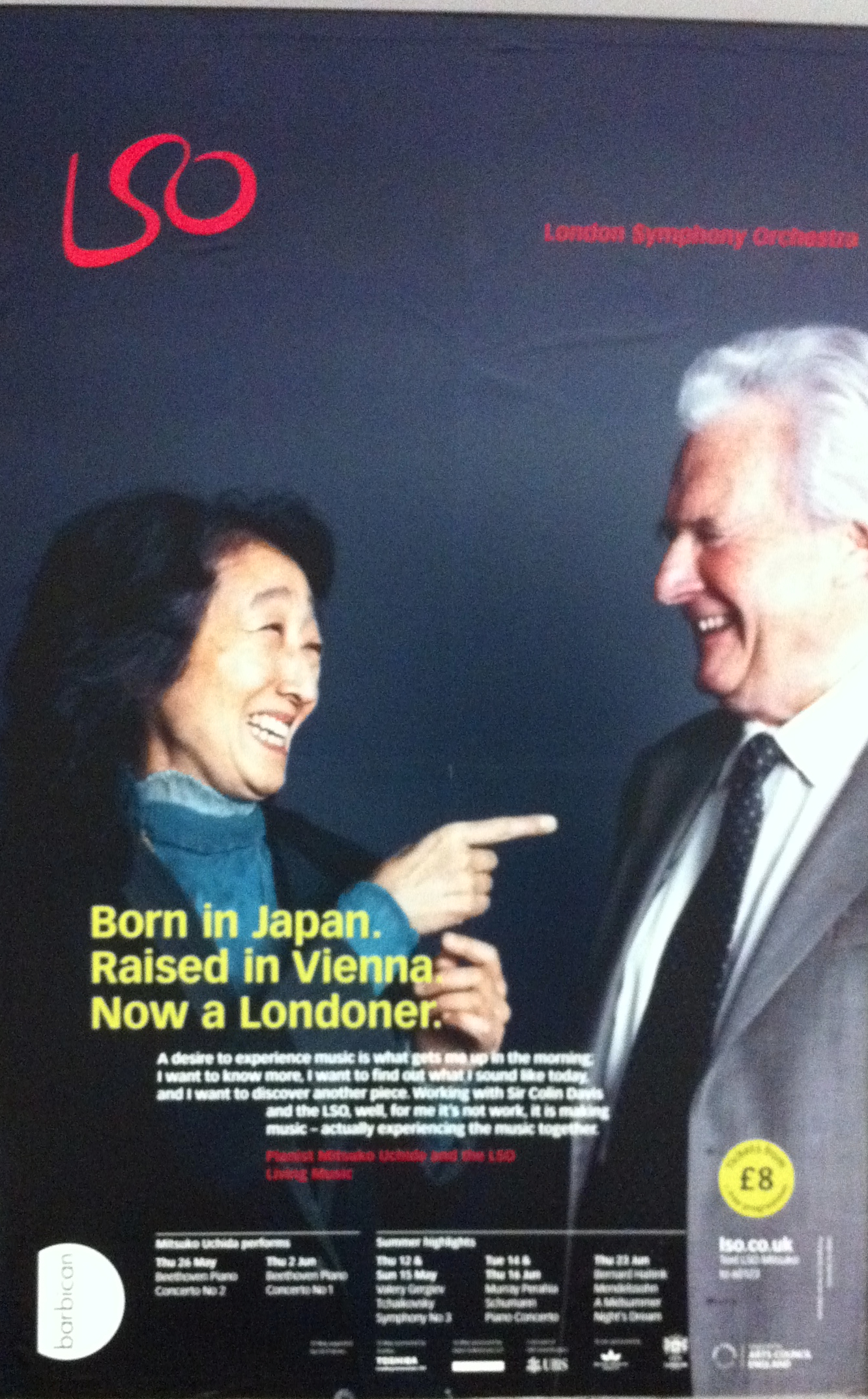Why — very tentative thought, here — the UK might be ahead of most of us in the UK, as we move toward classical music’s future.
First: posters.

“A desire to experience music is what gets me up in the morning. I want to know more, I want to find out what I sound like today, and I want to discover another piece. Working with Sir Colin Davis and the LSO, well, it’s not work, it is making music — actually experiencing the music together. “
Exactly what I’ve urged, for so long. To bring classical music alive for a new audience, let the musicians talk about why they love what they do.
And also these two images, from the English National Opera. I couldn’t photograph their posters, since I only saw them on escalators in the underground, and went past them too quickly. So I took these images from the ENO’s very lively website.
For Simon Boccanegra:


You can see more on the “See What’s On” page on the ENO’s website. Their current hit is Terry Gilliam’s production of Damnation of Faust:

The LSO and ENO may well be way ahead of the curve in the UK. But I’m not sure anyone in the US can match what they’re doing here.
Next: more on the LSO, and something about the Roundhouse — the most exciting performing arts space I’ve ever seen, where classical music is triumphantly presented in a pop music context.

Sorry, I don’t see it. To me the LSO poster doesn’t seem like anything that will attract a new audience, just the opposite, it seems far too insidery. Who are the people in the photo? Will anyone new to classical music have any idea? What do they do, why should I see them? The poster doesn’t give much of a clue. Just a bunch of self-congratulatory, too clever by half prose. I’m all for changing the approach from stodgy images of people in tails but to me, this doesn’t come anywhere near a useful alternative.
The LSO ad looks like it’s for a retirement home or maybe a niche dating website for singles in their golden years. I probably wouldn’t even look at it long enough to figure out what it’s for, writes late-20s American.